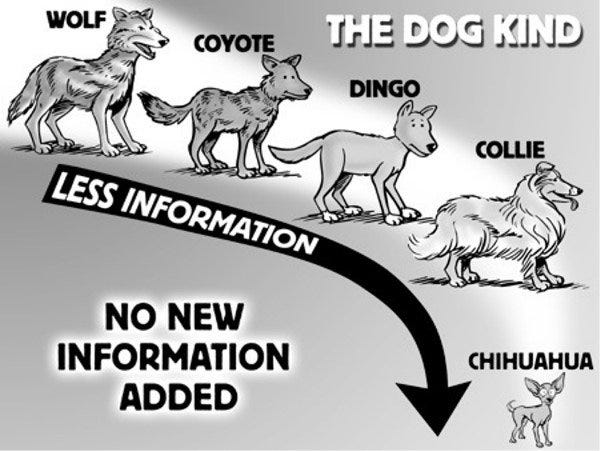earth evolution: How modern creationists embrace their own undoing
The evolution of creationism
Young-earth creationism is a relatively recent development. The earliest creationists had no particular dispute with deep time or mainstream geology; rather, religious objections to Darwin’s theories had to do with their implications for human identity. Some opposed the idea of common descent because they felt it took God out of the process of creation; more protested the shocking notion that the various races shared the same origins.
Originally, creationists insisted that the natural selection described by Darwin was as much a myth as universal common descent. A species could produce a variety of breeds by varying small characteristics, but all the breeds remained part of the same collective population. They believed God had created all species essentially in the same state they are found today.
By the time organized religious creationism synthesized its young-earth position — complete with six-day creation and the full-size Noah’s Ark, as described by 1960’s The Genesis Flood by Whitcomb and Morris — the argument had changed. Apologists began advancing a distinction now familiar to those who exposed to creationist ideas: the concept of microevolution
While these terms have valid definitions in modern biology, they have different meanings for creationists. Microevolution is the term they use for change or variation that takes place within a “kind” of organism, while macroevolution is used to describe “change between kinds”. To creationists, microevolution is a viable, observable natural process, but macroevolution is impossible.
This, of course, begs the question of what constitutes a “kind”.


The most common example, provided by even the earliest creationists, is the difference between dogs and cats. The diversity of dog breeds, they explain, is the result of microevolution, or variation among a large population of canids— initially only among domesticated dogs, then all dogs, dingoes, and wolves, and now expanded to include foxes and other genera— but that a dog could never, ever evolve into anything like a cat. They claim microevolution is characterized by a loss or filtering of genetic information, moving from a more complete genome to a restricted one; they argue macroevolution (e.g., to get from a dog to something like a cat) would require adding new information to the genome and is thus impossible.
A creationist’s best friend
The comparison of dogs and cats provides a simple, readily-accessible rule suitable for the lay audiences courted by Answers in Genesis and other creationist groups. It’s easy to remember: small changes “within a kind” are natural, observable variation (and part of God’s plan); large changes “between kinds” are evolutionary nonsense with no evidence. They trot out the example with dogged regularity:

The same example is even used to build out additional polemics against their caricature of mainstream biology:

While these simplistic arguments are embarrassingly easy to refute — the March 2018 tweet above obscures the difference between artificial selection by breeders and natural selection by environmental change — they remain convincing to the millions of evangelical Christians who continue to believe evolution is a secular conspiracy. However, as with most pseudoscience, the flaws become evident when you try to follow the idea to its natural conclusion. The work done in constructing the new Ark Encounter does exactly this.
Filling the Ark
The tale of eight righteous people keeping tens of thousands of animals alive on a prehistoric wooden barge for the better part of a year strains credulity, even for true believers like Ham. In order to make the whole affair seem more feasible without appealing to an endless string of miracles, the designers of the Ark Encounter push to minimize overcrowding. Since the dimensions of Noah’s vessel are set by Genesis, their only way to reduce crowding is to consolidate more and more species into an ever-shrinking number of baramins. Perhaps no better example of this arises with the very illustration used most often by creationists: cats, dogs, and the rest of Order Carnivora.
Answers in Genesis has repeatedly posted large, detailed lists of various species, families, and orders with attempts to organize them according to the new creationist taxonomy. One of the largest such postings, by retired veterinarian Jean Lightner, organizes the majority of Order Carnivora into eight distinct baramins: cats, civets, dogs, hyenas, bears, weasels, mongooses, and red pandas.
Conveniently for creationists, this means the ~250 extant terrestrial carnivoran species (plus numerous extinct relatives) would be represented by only 16 individuals on the Ark, as depicted below.


As the Ark Encounter neared completion in 2016, designers worked to build out models that would be used to depict each original pair. The problem arose when they began to imagine what each of these original “created kinds” must have looked like.
Because creationists insist all genetic information ultimately traces back to a divine author, rather than being generated by the iterative process of mutation and natural selection, they must claim adaptation and speciation only take place as a result of information loss. This requires each “original created kind” be the ultimate representative of all its descendants, which in turn guided their designers in coming up with the models for the Ark project. Combining the characteristics of all extant cats to form a super-cat, all bears to form a super-bear, and so forth produces a picture of what each “Ark kind” would have had to look like:
